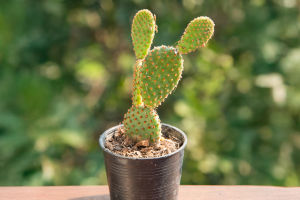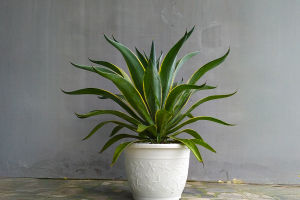Agave plants aren't just for outdoor gardens. Some compact varieties, like the Victoria Queen, can shine beautifully on our windowsills.
With loose, sandy soil, minimal watering, and a temperature above 5℃, these drought-resistant wonders can survive indoors for months even in low light. What's truly fascinating is that agave can take over 30 years to bloom.
Before the mother plant fades, it produces countless offsets, ensuring life continues through new growth. Let's explore how we can make these resilient plants thrive, both inside and outside.
Choosing Agave for Indoors
Many people assume agave only thrives outdoors because we often see them as large, spiky plants that seem unsuitable for indoor care. This is a limited view. In reality, agave can flourish indoors with the right approach. The key is understanding their sensitivity to cold and providing appropriate care. With the right conditions, agave can show its unique charm in our homes, even under relatively low light.
We also have plenty of indoor-friendly varieties. Tiny types need only a small container on a windowsill to grow well. Many plant enthusiasts have successfully nurtured agave indoors along with other drought-tolerant plants, proving that even modest lighting is enough for them to thrive.
Exploring Varieties
Agave comes in numerous varieties, such as Victoria Queen, Margined Agave, Striped Agave, Silver-edged Agave, Thor, and Small-flowered Century Plant. Their sizes vary greatly: some grow tall outdoors, reaching over a meter, while others are perfect for small indoor containers. Choosing the right size for our space is crucial.
If we grow agave in a container, regular repotting is necessary. Otherwise, its roots can quickly dominate the container and hinder proper growth. Usually, repotting every two to three years is sufficient.
Potting and Care Tips
A well-cared-for potted agave develops strong roots and often produces numerous offsets, signaling vibrant health. Agave is surprisingly adaptable. It can thrive in bright sunlight and tolerate partial shade, though it should never be placed in complete darkness.
For indoor potting, smaller varieties like Victoria Queen, Thor, or Silver-edged Agave are ideal. The soil should be loose, well-draining, and sandy. Agave doesn't need rich soil; even poor soil works as long as drainage is excellent. Mixing in 2–3 parts of river sand or perlite can optimize the potting mix and prevent waterlogging.
Encouraging Blooms
Getting agave to flower is a long-term challenge—it often takes over 30 years. When the mother plant finally blooms, it will gradually decline. But this isn't the end. The flowering plant produces many offsets that we can carefully trim and grow into new plants, expanding our agave family. This cycle of growth and renewal is part of what makes caring for agave so rewarding.
Environment and Climate Needs
To ensure healthy growth and successful flowering, we need to provide the right environment. Agave prefers well-ventilated, bright spots. A windowsill facing east or south or a balcony with ample sunlight is perfect.
Watering should be minimal. Only water when the soil has fully dried, as agave stores plenty of moisture in its leaves and roots. Even in indoor conditions, one or two months without watering won't harm it.
Temperature control is critical, especially during colder months. Agave dislikes frost, so indoor temperatures should remain above 5℃. As autumn and winter approach, reduce watering and move the plant to a warm indoor location. Avoid placing it near direct heat from radiators or air vents to ensure a safe, stress-free winter.
Grow Strong
Caring for agave is simple and rewarding. Placing it on a sunny windowsill or in a bright garden spot, giving it the right soil, enough light, and a cozy temperature, allows us to enjoy a tough, low-maintenance plant that brightens our space. Watching new offsets appear and witnessing the rare bloom is a special moment that shows patience truly pays off. Let's nurture these amazing plants and build our own thriving agave family together!
Agave Cactus Care | At Home With P. Allen Smith
Video by ehowhome


